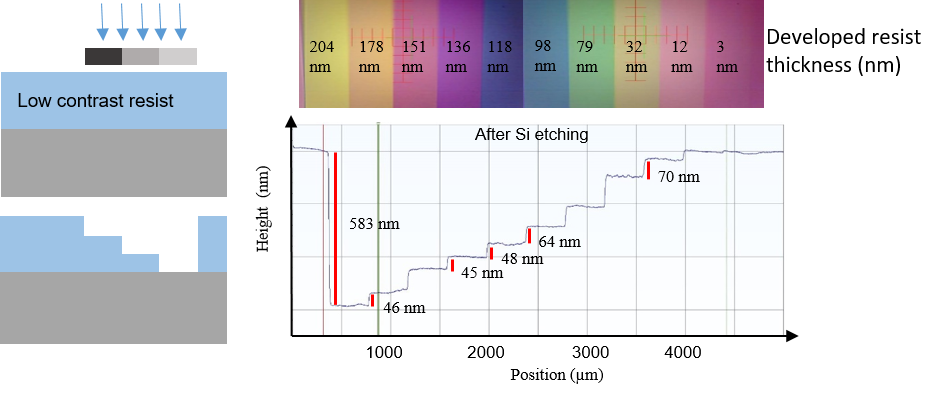- Share
- Share on Facebook
- Share on X
- Share on LinkedIn

Grayscale lithography is based on the local modulation of the exposure dose in a photosensitive resist, in order to vary the thickness of the developed resist.
This requires a low-contrast resist, whereas the resist is fully developed beyond a certain exposure dose threshold in binary lithography.
Grayscale lithography produces a 3D profile in the resist, which can then be transferred to the underlying substrate by plasma etching.
One of the aims of this study was to understand the exposure phenomena and optimize the parameters leading to improved resist contrast.
The outstanding result was the realization of 20 nm high steps in the resist by UV grayscale lithography.
- Share
- Share on Facebook
- Share on X
- Share on LinkedIn